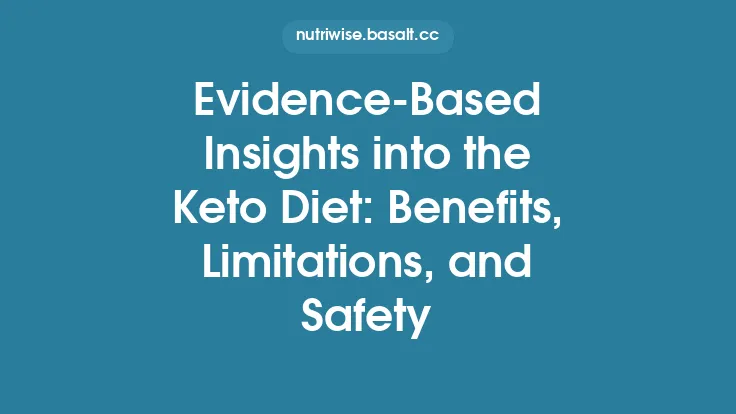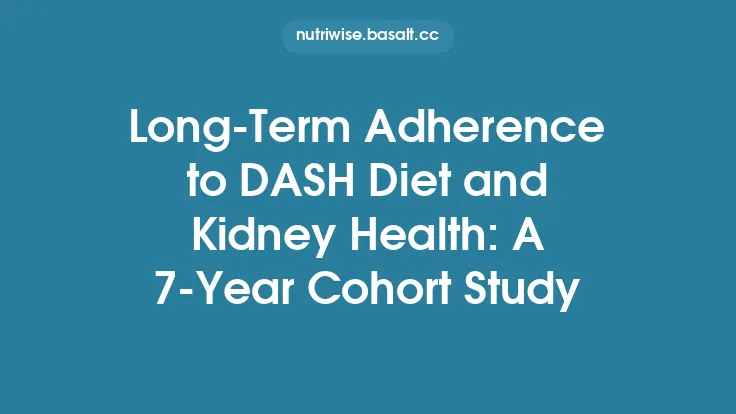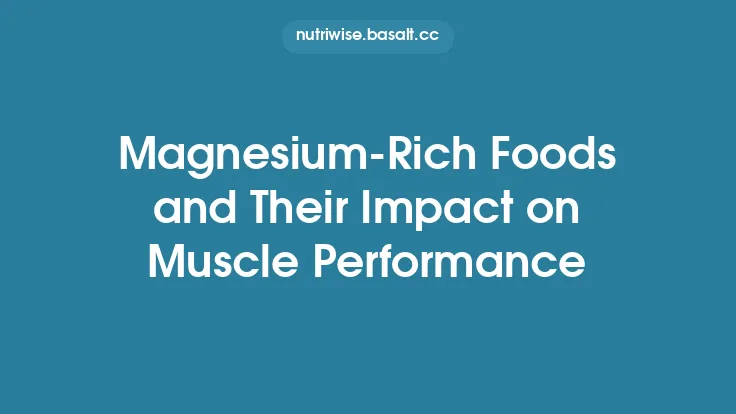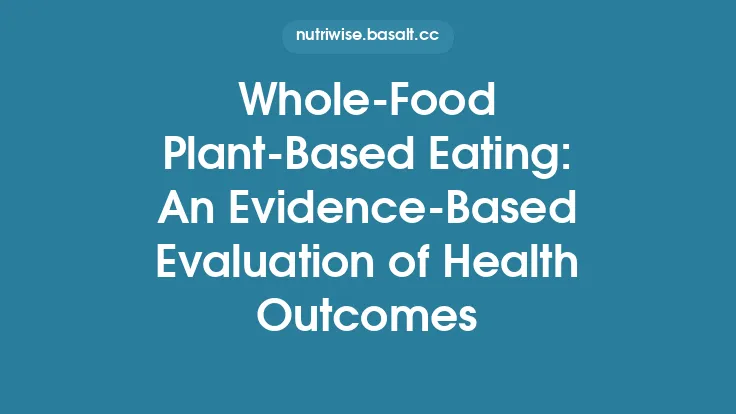Sugary‑drink taxes have become one of the most visible and debated tools in the public‑health nutrition toolbox. Over the past two decades, a growing body of research has examined how levying a fiscal charge on sugar‑sweetened beverages (SSBs) influences consumption, health outcomes, and broader economic factors. This article synthesizes the most robust evidence, outlines the mechanisms through which taxes operate, and offers practical guidance for policymakers seeking to design, implement, and evaluate an effective levy.
1. Rationale for Taxing Sugar‑Sweetened Beverages
1.1. Public‑health burden of SSBs
- Caloric contribution: SSBs account for roughly 7–10 % of total daily energy intake in many high‑income countries and up to 15 % in some low‑ and middle‑income settings.
- Metabolic consequences: Regular consumption is linked to weight gain, type 2 diabetes, hypertension, dyslipidemia, and dental caries. Meta‑analyses estimate a relative risk of 1.26 for incident type 2 diabetes per additional 12 oz of SSB per day.
- Population‑level impact: Even modest shifts in average intake can translate into substantial reductions in disease incidence because of the high prevalence of SSB consumption.
1.2. Economic externalities
- Healthcare costs: In the United States, excess SSB consumption is estimated to cost the health system $30–$40 billion annually in direct medical expenses.
- Productivity losses: Obesity‑related absenteeism and reduced labor force participation add indirect costs that are often omitted from individual‑level cost‑effectiveness analyses.
1.3. Market failure and price elasticity
- Information asymmetry: Consumers frequently underestimate the caloric and sugar content of SSBs, especially when marketed as “light” or “zero‑calorie” alternatives.
- Externalities: The societal costs of SSB‑related disease are not reflected in the market price, justifying a corrective tax to internalize these costs.
2. Tax Design Options
| Design Feature | Description | Typical Implementation | Evidence on Effectiveness |
|---|---|---|---|
| Base | Tax applied per unit volume (e.g., $0.01 per ounce) | Simple to administer; used in Berkeley (US) and Mexico | Generates larger price increases for high‑volume drinks; modest impact on sugar content per drink |
| Sugar‑content | Tax levied per gram of added sugar (e.g., $0.003 per gram) | More complex; adopted in the UK Soft Drinks Industry Levy (SDIL) | Stronger incentive for reformulation; leads to greater reductions in sugar density |
| Tiered | Different rates for low, medium, and high sugar concentrations | UK SDIL uses a two‑tier system (0.24 £/L for >8 g/100 mL, 0.18 £/L for 5–8 g/100 mL) | Encourages manufacturers to shift products into lower‑tax brackets |
| Revenue‑use earmarking | Directing tax proceeds to health programs, education, or infrastructure | Mexico earmarks 30 % for water infrastructure; Berkeley funds community health initiatives | Improves public acceptance and can amplify health benefits through complementary interventions |
Key technical considerations
- Pass‑through rate: Empirical studies show that 80–100 % of the tax is typically passed on to consumers in the form of higher retail prices, though the exact rate varies by market structure and retailer response.
- Cross‑price elasticity: Substitutes (e.g., bottled water, unsweetened tea) often experience a price‑elastic increase in demand, while substitutes with similar sugar content (e.g., fruit juices) may see limited shifts, underscoring the need for complementary policies.
- Administrative feasibility: Volume‑based taxes are easier to monitor through existing excise‑tax collection mechanisms, whereas sugar‑content taxes require accurate reporting of formulation data and periodic audits.
3. Empirical Evidence on Consumption and Health Outcomes
3.1. Natural experiments
- Mexico (2014): A 10 % excise tax on SSBs resulted in a 7.6 % decline in purchases in the first two years, with the greatest reductions among low‑income households. Subsequent health‑impact modeling predicts 1.5 % fewer diabetes cases and 0.5 % fewer cardiovascular events over a decade.
- Berkeley, California (2015): A $0.01/oz tax led to a 9.6 % reduction in SSB sales after one year, accompanied by a 6.1 % increase in water sales. A longitudinal cohort study observed a modest but statistically significant reduction in BMI z‑scores among adolescents.
- United Kingdom (2018): The SDIL prompted a 30 % reduction in the average sugar content of soft drinks within two years, primarily through reformulation. National dietary surveys recorded a 5 % decline in per‑capita sugar intake from beverages, contributing to the overall downward trend in added sugars.
3.2. Meta‑analytic synthesis
A 2022 systematic review of 15 quasi‑experimental studies (covering 10 jurisdictions) reported:
- Average price elasticity: –0.9 (95 % CI: –0.8 to –1.0) for SSBs, indicating that a 10 % price increase yields a 9 % consumption reduction.
- Caloric impact: A 10 % tax translates to a mean reduction of 20 kcal per person per day, sufficient to prevent weight gain over a 5‑year horizon in a typical adult population.
- Equity effects: Low‑income groups exhibit higher price elasticity, leading to larger absolute reductions in intake, though concerns about regressive financial burden persist.
3.3. Modeling health outcomes
- Markov cohort models consistently show that a 10 % SSB tax can avert 1.5–2.5 % of new type 2 diabetes cases and 0.5–1 % of cardiovascular events over a 20‑year horizon, depending on baseline consumption levels.
- Cost‑effectiveness: Incremental cost‑effectiveness ratios (ICERs) range from $1,200 to $4,500 per quality‑adjusted life year (QALY) gained, well below typical willingness‑to‑pay thresholds in high‑income settings.
4. Economic and Fiscal Implications
4.1. Revenue generation
- Magnitude: In Mexico, the first year of the tax generated approximately $2.5 billion USD, representing 0.5 % of total federal tax revenue.
- Allocation: When earmarked for health‑related spending, revenues can fund water infrastructure, nutrition education, or subsidized healthy foods, creating a virtuous cycle that amplifies health gains.
4.2. Industry response
- Reformulation: The UK SDIL prompted over 200 manufacturers to reduce sugar content, with an average reduction of 30 % in high‑taxed products.
- Product diversification: Some firms introduced “low‑tax” alternatives (e.g., flavored water, diet drinks). While these can be beneficial if they replace SSBs, the health impact depends on the nutritional profile of the substitutes.
4.3. Employment and market dynamics
- Short‑term effects: Empirical analyses in Mexico and Berkeley found no statistically significant impact on employment in the beverage sector.
- Long‑term adaptation: The industry’s shift toward lower‑sugar products may create new market niches and stimulate innovation in healthier beverage options.
5. Equity and Distributional Considerations
- Regressive perception vs. progressive health impact: Although low‑income households spend a larger share of their income on SSBs, they also experience greater health benefits from reduced consumption.
- Mitigation strategies:
- Revenue earmarking for programs that directly benefit low‑income communities (e.g., free water stations in schools, nutrition counseling).
- Tiered tax structures that impose higher rates on the most sugar‑dense drinks, reducing the burden on lower‑sugar, lower‑price options.
- Complementary subsidies for healthier beverages (e.g., bottled water, unsweetened tea) to offset any financial strain.
6. Implementation Roadmap
| Phase | Key Activities | Stakeholder Involvement | Success Metrics |
|---|---|---|---|
| 1. Feasibility & Design | Conduct baseline consumption surveys; model price elasticity; decide tax base (volume vs. sugar) | Public‑health agencies, tax authorities, academic researchers | Clear tax structure; projected revenue estimate |
| 2. Legislative Process | Draft legislation; stakeholder consultations; impact‑assessment reports | Lawmakers, industry lobbyists, civil‑society groups | Passage of bill; inclusion of earmarking provisions |
| 3. Administrative Setup | Update excise‑tax collection systems; develop reporting templates for manufacturers (if sugar‑content tax) | Tax administration, customs, beverage industry | Operational tax collection within 6 months |
| 4. Public Communication | Launch awareness campaign explaining health rationale and revenue use | Health ministries, media, NGOs | Public awareness >70 % measured via surveys |
| 5. Monitoring & Evaluation | Quarterly price monitoring; annual sales data analysis; health outcome surveillance | Academic partners, statistical agencies | Price pass‑through ≥80 %; consumption decline ≥5 % in first year |
| 6. Policy Adjustment | Review elasticity estimates; adjust tax rate or tiers as needed | Policy advisory board | Evidence‑based refinements within 2–3 years |
7. Challenges and Mitigation Strategies
- Industry opposition
- Mitigation: Transparent stakeholder dialogues; phased implementation; offering technical assistance for reformulation.
- Cross‑border purchasing
- Mitigation: Regional coordination of tax policies; border enforcement mechanisms; monitoring of import data.
- Substitution to untaxed high‑sugar products (e.g., fruit juices)
- Mitigation: Parallel policies such as labeling requirements or modest taxes on high‑sugar non‑carbonated drinks; public‑education campaigns on total sugar intake.
- Data gaps for real‑time monitoring
- Mitigation: Mandate electronic sales reporting; leverage point‑of‑sale data; partner with market‑research firms for timely analytics.
- Political turnover
- Mitigation: Embed the tax within broader fiscal legislation; secure multi‑year budget allocations for revenue use; build bipartisan support through evidence of health and fiscal benefits.
8. Future Research Directions
- Longitudinal health impact: More cohort studies tracking BMI, glycemic markers, and cardiovascular events over 10–15 years post‑implementation.
- Interaction with other policies: Evaluating synergistic effects of SSB taxes combined with front‑of‑package warnings, school‑based nutrition standards, or subsidies for healthy foods.
- Behavioral mechanisms: Understanding how price signals interact with taste preferences, habit formation, and social norms, especially among adolescents.
- Global equity: Comparative analyses of tax impacts in low‑ and middle‑income countries where informal markets dominate, to refine design for contexts with limited tax‑administration capacity.
- Dynamic modeling: Incorporating industry innovation cycles (e.g., emergence of novel sweeteners) into economic simulations to anticipate future consumption patterns.
9. Practical Take‑aways for Policymakers
- Start with a clear health objective (e.g., 10 % reduction in added‑sugar intake) and align the tax design accordingly.
- Prefer sugar‑content or tiered structures if the goal includes encouraging product reformulation; volume‑based taxes are simpler but may yield smaller sugar reductions.
- Ensure high pass‑through by monitoring retail prices and adjusting enforcement mechanisms early.
- Earmark a portion of revenue for programs that directly improve access to healthy beverages, thereby enhancing public acceptance and equity.
- Build a robust evaluation framework from day one, using both sales data and health surveillance to track short‑ and long‑term outcomes.
- Engage a broad coalition—including health professionals, community leaders, and, where feasible, progressive industry partners—to sustain political support across election cycles.
By grounding tax policy in rigorous evidence, designing mechanisms that incentivize both consumer behavior change and industry reformulation, and coupling fiscal measures with transparent revenue use, governments can create a durable, health‑promoting lever. The accumulated research demonstrates that well‑crafted sugary‑drink taxes are not merely revenue tools; they are effective, cost‑efficient interventions that can reduce the burden of diet‑related chronic disease while generating funds for further public‑health investments.





